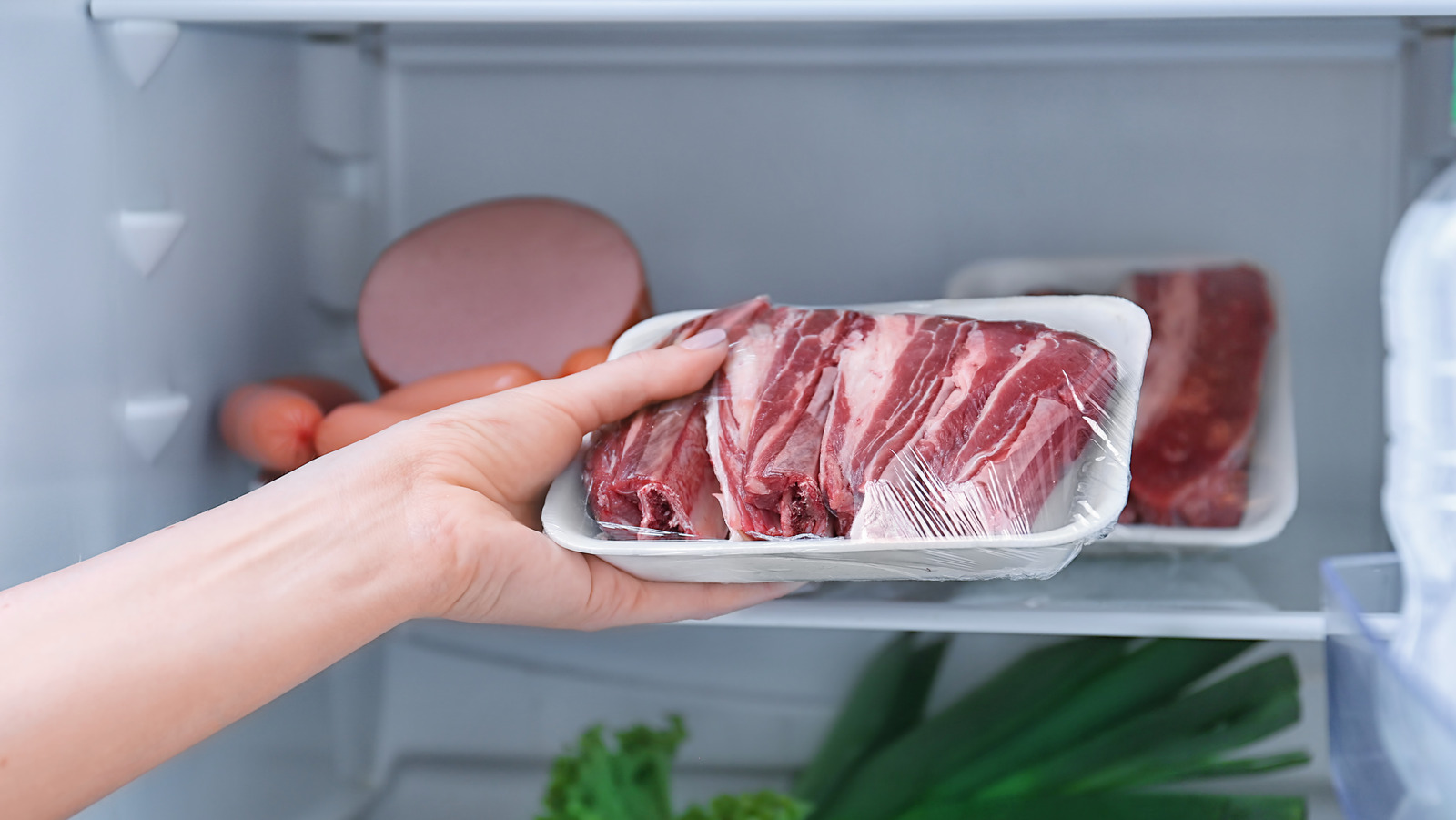Beef is one of the most popular meats around A juicy grilled steak, a hearty beef stew, and a mouthwatering burger are just a few delicious ways to enjoy this tasty and versatile meat. When it comes to storing beef in the refrigerator, however, things can get a little tricky How do you know if the beef you bought at the supermarket or butcher shop is still safe to cook and eat? This article will provide tips on maximizing the shelf life of fresh beef, so you can enjoy it safely.
How to Store Fresh Beef Properly
To get the longest lasting fresh beef, it’s important to store it correctly from the start Here are some tips
-
To keep beef from leaking and getting freezer burn, wrap it tightly in plastic wrap or put it in a plastic bag that can be closed again. I like to use freezer bags since they are thicker.
-
Remove any store wrapping first, as this can trap moisture and spoil the meat faster.
-
Use beef within 2 days of purchasing for best quality.
-
Place beef on a shelf or in a meat drawer in the back of the fridge, where it will stay cooler.
-
Keep the fridge between 34-40°F for optimal freshness.
-
Don’t overcrowd the fridge or block vents, as ample airflow keeps food chilled.
-
Always store raw beef separately from cooked meats and other foods to avoid cross-contamination. I place raw beef on a plate on the bottom shelf.
Following these tips will help keep your fresh beef tasting great until you are ready to cook it. Now let’s look at how long beef actually lasts in the fridge.
Beef Shelf Life in the Refrigerator
The shelf life of beef depends on a variety of factors, including the type of meat, how it was packaged, and storage temperatures. Here are some general timelines for maximum freshness:
- Ground beef: 1-2 days
- Steaks, roasts, and stew meat: 3-5 days
- Beef liver: 1-2 days
These timeframes are for beef stored properly at 40°F or below. Grinds and organ meats have a shorter shelf life, so should be cooked sooner, while whole cuts last a bit longer.
Beef can be safely frozen for 4-12 months to extend its shelf life even longer. Simply wrap tightly in freezer bags or plastic wrap, removing as much air as possible. It’s best to freeze beef as soon as you bring it home from the store.
Thawed beef should be used within 1-2 days and kept fridge temperatures no higher than 40°F. Do not refreeze beef once it has fully thawed.
Is It Bad or Unsafe? How to Tell
Beef can look and smell completely normal but still be spoiled, so you can’t rely on appearance and odor alone. Here are some signs that indicate it’s time to toss out beef:
-
Slimy texture – Beef should feel moist but not overly sticky or slimy. This indicates spoilage bacteria are growing.
-
Off odor – Fresh beef has a mild meaty smell. A sour or ammonia-like stench means bacteria have multiplied.
-
Discoloration – Bright red beef should turn slightly brown, but greenish, grey, or black spots indicate mold or slime formation.
-
Expired date – Frozen beef only stays fresh as long as the expiration date, even if stored properly at 0°F or below.
-
Dubious history – When in doubt, throw it out! Beef that has been left out on the counter for over 2 hours or suffered temperature abuse may not be safe.
Trust your senses – if beef seems at all questionable, it’s better to be safe than sorry and toss it in the trash rather than risk foodborne illness.
Best Practices for Handling Raw Beef
To keep beef as fresh as possible, and avoid potential illness, it’s important to handle raw beef properly:
-
Avoid cross-contamination – Use separate cutting boards and utensils for raw beef and other foods. Wash all surfaces, hands, knives, etc immediately after working with raw beef.
-
Defrost in fridge – Do not thaw beef at room temperature, which allows bacteria to multiple quickly. Thaw in the fridge or cold water instead.
-
Marinate in fridge – Marinades used for raw beef should be refrigerated, not left out overnight. Cook used marinade thoroughly to kill germs before serving.
-
Cook thoroughly – Ground beef should be cooked to an internal temperature of 160°F. Steaks can be enjoyed more rare, but should reach at least 145°F.
-
Use within 2 hours – Never leave raw beef out of the fridge for over 2 hours total, 1 hour if outdoor temperatures exceed 90°F.
Following safe meat handling guidelines will keep both you and your fresh beef healthy and happy!
Frequently Asked Questions
Still have questions about how long beef lasts? Here are some common queries:
How can I tell when ground beef has gone bad?
Ground beef only lasts 1-2 days in the fridge. Signs it has spoiled include a foul odor, slimy texture, or unnatural colors. When in doubt, throw it out!
Do frozen hamburgers expire?
Burgers remain safe to eat while frozen, but quality declines over time. Check expiration dates and discard any beef beyond that timeframe, even if frozen solid.
Can I refreeze thawed ground beef?
It’s not recommended. Thawed beef, especially ground, is more prone to bacteria growth. Refreezing may allow germs to flourish. Cook thawed beef within 1-2 days.
What happens if I eat spoiled raw beef?
Consuming spoiled raw beef poses a high risk of food poisoning. Symptoms include nausea, vomiting, diarrhea, cramps, and fever that begin anywhere from 1-48 hours after eating bad meat.
Is brown or gray beef still OK to cook?
It’s normal for beef to turn slightly brown or darker red during fridge storage. Meat that is gray, green, or has dark spots should be discarded. Always rely on smell and texture too.
How can I keep steaks fresh longer?
Freeze steaks if you won’t use within 3-5 days. Or wrap tightly in butcher paper instead of plastic wrap, which allows meat to breathe. Store at 34-40°F and use marinades sparingly.
The Takeaway on Beef Freshness
To get the most out of the beef you buy, proper storage is key. Use fresh ground beef within 1-2 days, steaks and roasts within 3-5 days, and liver within 1-2 days for optimal quality and safety. Freezing can significantly extend the shelf life. Observe signs of spoilage like off-colors, odors, and slime to determine if beef has gone bad. With proper handling and care, you can enjoy delicious and healthy fresh beef for days to come. Trust your senses, adhere to food safety principles, and bon appetit!

